Mostly female Broad-tailed Hummingbirds. I think.
I’ll admit right off the top that I really struggle to reliably ID some female hummingbirds. Yesterday morning I spent a few minutes with at least two females as they were nectaring on Black Twinberry Honeysuckle in the mountains. I believe at least one of them was a Broad-tailed Hummingbird and I’m not sure about the other one so in this post I’m going to treat them generically. I welcome ID suggestions if you feel the urge to provide them.
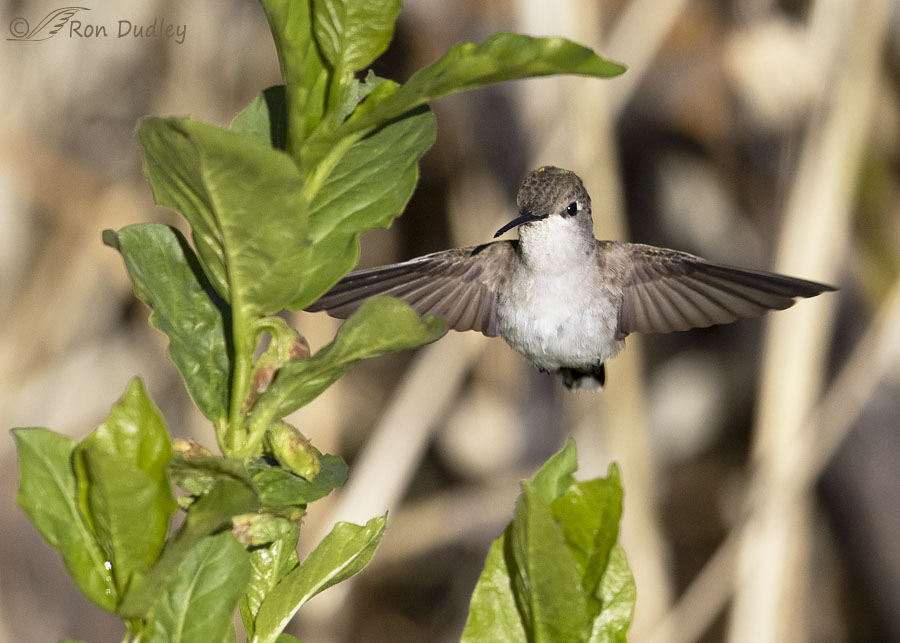
1/6400, f/6.3, ISO 800, Canon 7D Mark II, Canon EF 500mm f/4L IS II USM + EF 1.4 III Extender, not baited, set up or called in
The twinberry flowers have only appeared recently but they’re a big attraction for hummingbirds so it doesn’t take hummers long to show up after the flowers are out. Yesterday morning was the first time I’ve seen hummers at this twinberry shrub this year.
I much prefer hummingbird photos taken in a natural setting so I don’t post photos of them taken at my back yard feeders. It was especially tough shooting at this location because the shooting angle was unusually difficult out my pickup window and the vegetation was so thick it was hard to get clear shots of the birds in flight. And when I did, more often than not they had their backs to me.
But I got a few I liked, including this one, even though part of her right wing is hidden.
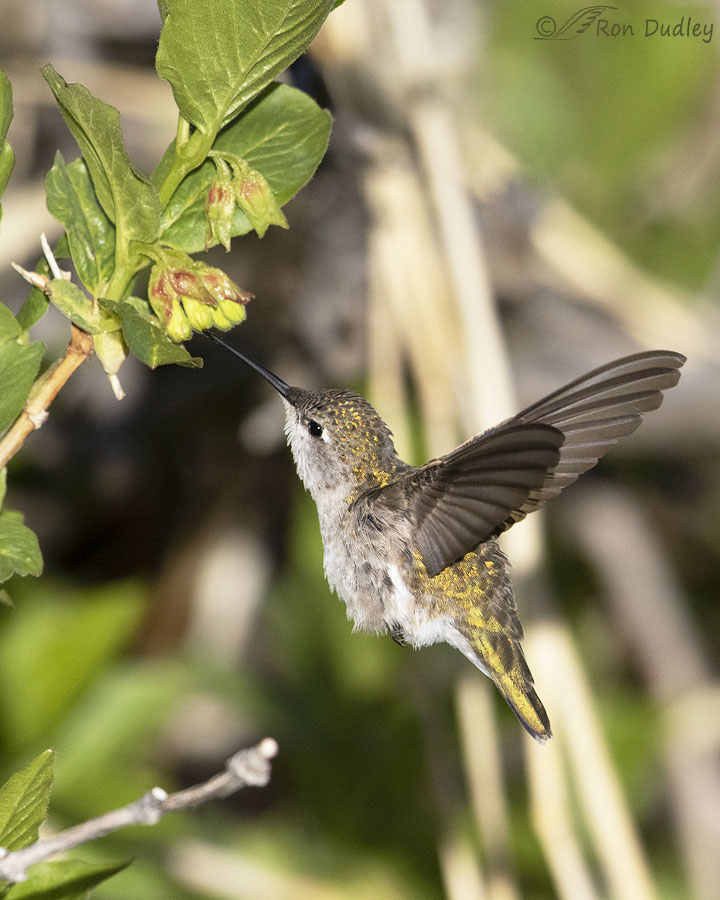
1/6400, f/6.3, ISO 800, Canon 7D Mark II, Canon EF 500mm f/4L IS II USM + EF 1.4 III Extender, not baited, set up or called in
Here we have a good look at the twinberry flowers that are such a draw for hummingbirds. They must be loaded with nectar, which isn’t really a surprise since they’re a type of honeysuckle.
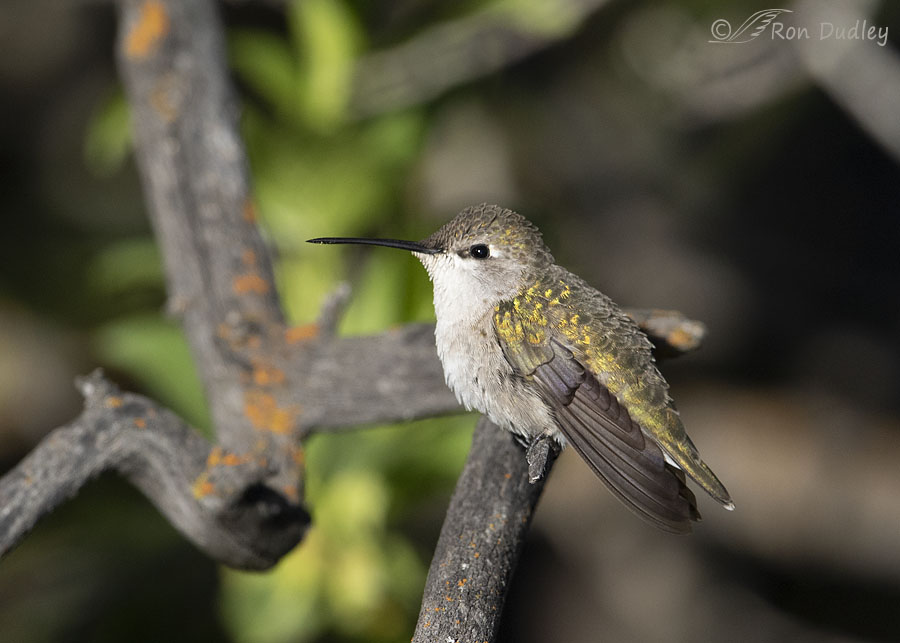
1/2500, f/6.3, ISO 800, Canon 7D Mark II, Canon EF 500mm f/4L IS II USM + EF 1.4 III Extender, not baited, set up or called in
This was the only time I photographed one of the hummers perched. Perhaps she needed a rest after all that buzzing around looking for her version of orange juice for breakfast.
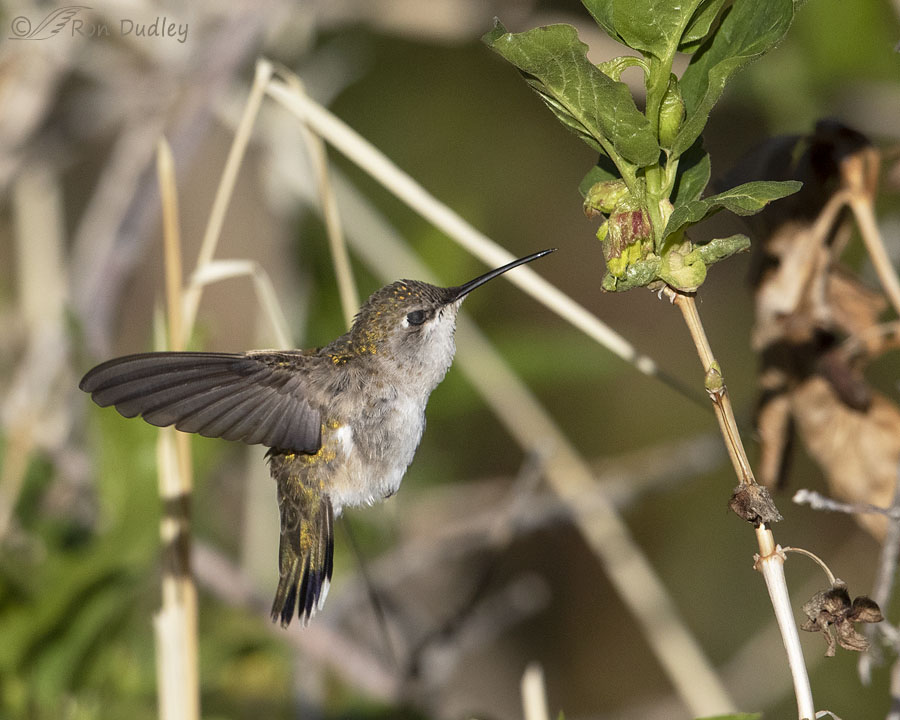
1/6400, f/6.3, ISO 800, Canon 7D Mark II, Canon EF 500mm f/4L IS II USM + EF 1.4 III Extender, not baited, set up or called in
If this isn’t the only time it’s one of the very few times I’ve ever photographed a hummingbird with its nictitating membrane closed. There’s a catch light in her eye but it’s extremely diffused because of the effects of the membrane.
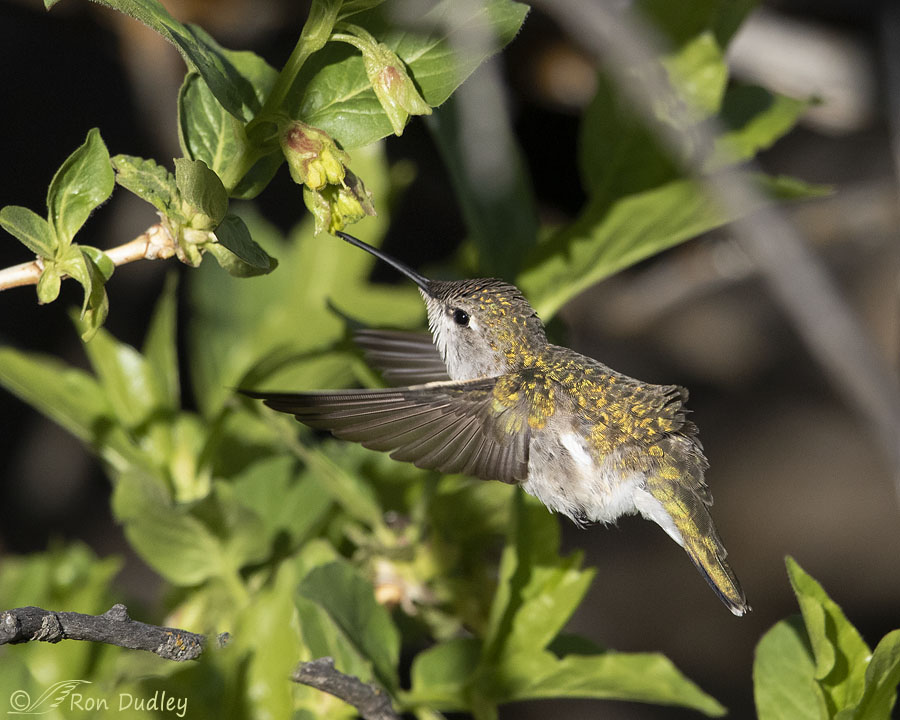
1/3200, f/6.3, ISO 800, Canon 7D Mark II, Canon EF 500mm f/4L IS II USM + EF 1.4 III Extender, not baited, set up or called in
This may be my favorite hummingbird photo of the morning. I like her iridescence, her wing position, the excellent look at the twinberry flowers she’s feeding on and the sharpness of the image.
Ron
A lengthy note to photographers:
With hummingbird in flight photos I generally prefer little to no motion blur in the wings which requires very fast shutter speeds, usually a minimum of 1/3200.. I shoot in aperture priority so I set my aperture and ISO and take what shutter speed I can get in the light provided at the moment. So I have to choose an ISO that gives me enough SS as the bird flies into and out of varying light conditions without setting my ISO so high that the noise in the image becomes ‘too much’, whatever that is. With hummers in flight I don’t have time to constantly fiddle-fart around with camera settings so it’s my practice to choose one combination and stick with it. I miss too many shots if I don’t.
With these hummers I believe my choice of aperture and ISO was just about right. The slowest SS I got with a hummer in flight was 1/3200 and in nearly all of my shots where the bird was sharp the wings were sharp, or sharp enough.
If I’d needed a little more SS I’d have gone to f/5.6 instead of increasing my ISO. With my camera I really try to avoid going above ISO 800 whenever possible. Your camera may handle noise better than mine does.
Sometimes I choose camera settings that work out and sometimes I don’t. This time I’m happy with my choices.


Whether or not, you could come up with the name given to these flying jewels by man, you sure captured their beauty.!!!
Yet another bird species you see and we do not which fills me with envy.
Pint sized energetic jewels.
“Pint sized energetic jewels”
They are indeed.
Great photos! I am going to guess Black-chinned due to tail wing ratio and the shape and smallness of the beak. Thanks for the photo techs too, I like to see what others shoot in, hummers are hard due to their speed.
So much gold iridescence is remarkable; a harbinger of the color of the soon to be fully opened petals.
We only get Rufous and Anna’s here so only a hardcore nonbirder wouldn’t have a clue.
Photographer or not I do like your technical discussions.
“Photographer or not I do like your technical discussions”
Very good to know, Lyle. It means I may be boring fewer of my readers than I thought I might…
Beautiful session. And thank you very much for the tips.
Thanks on both counts, Jorge.
Yes – like that last one best. The iridescence and the way the wings are positioned really make it special. I rank myself in the bottom 10% of hummingbird identifiers so whatever you say is ok with me. Great shots.
Thanks, Everett. I’m probably in that same bottom 10% when it comes to female hummers.
Bright jewels. I’ve seen some of the black-chinned hummers here. Rufous will be by later.
Arwen, I see Rufous later in the year too.
Beautiful little birds! The last photo showing the iridescence is special. Not familiar with the Twinberry bush – appears flowers might be a bit hard to spot at a distance – obviously the hummer has no problem with it….
The last photo showing the iridescence is special. Not familiar with the Twinberry bush – appears flowers might be a bit hard to spot at a distance – obviously the hummer has no problem with it….  Hummers ARE a challenge – thx for the tips…..
Hummers ARE a challenge – thx for the tips….. 
More rain – forget the eclipse and, perhaps, northern lights later in the week. Not complaining (too much) about the rain tho……
Not complaining (too much) about the rain tho…… 
Judy, their flowers aren’t particularly conspicuous to our eyes but hummers sure don’t have any trouble finding them. The large black berries are much more conspicuous – catbirds in particular love to eat them.
So for hummingbirds it has been your experience that you get the “best” results with f/6.3? It seems you would only go to f/5.6 if you are worried about the extra noise with a higher ISO. Thanks for the explanation.
“So for hummingbirds it has been your experience that you get the “best” results with f/6.3? ”
Elmer, it depends on the situation – mostly on how much light I have and how close I am. But with my gear 6.3 is my starting point default most of the time.
What a special series, Ron! You’ve again captured the subtle beauty of the females of a species.
Hope you had a chance to check out the lunar eclipse this morning. I had a wonderful view from my backyard and spent quite a bit of time outside with the binocs (and mosquitoes and encroaching marine layer) over the past couple of hours.
Marty, I went out to look for it a while ago but I can’t see the moon. Maybe the trees are in the way.
I watched some of it last night – in awe, in wonder and delight. For the first time in quite a while clouds didn’t obscure the show.